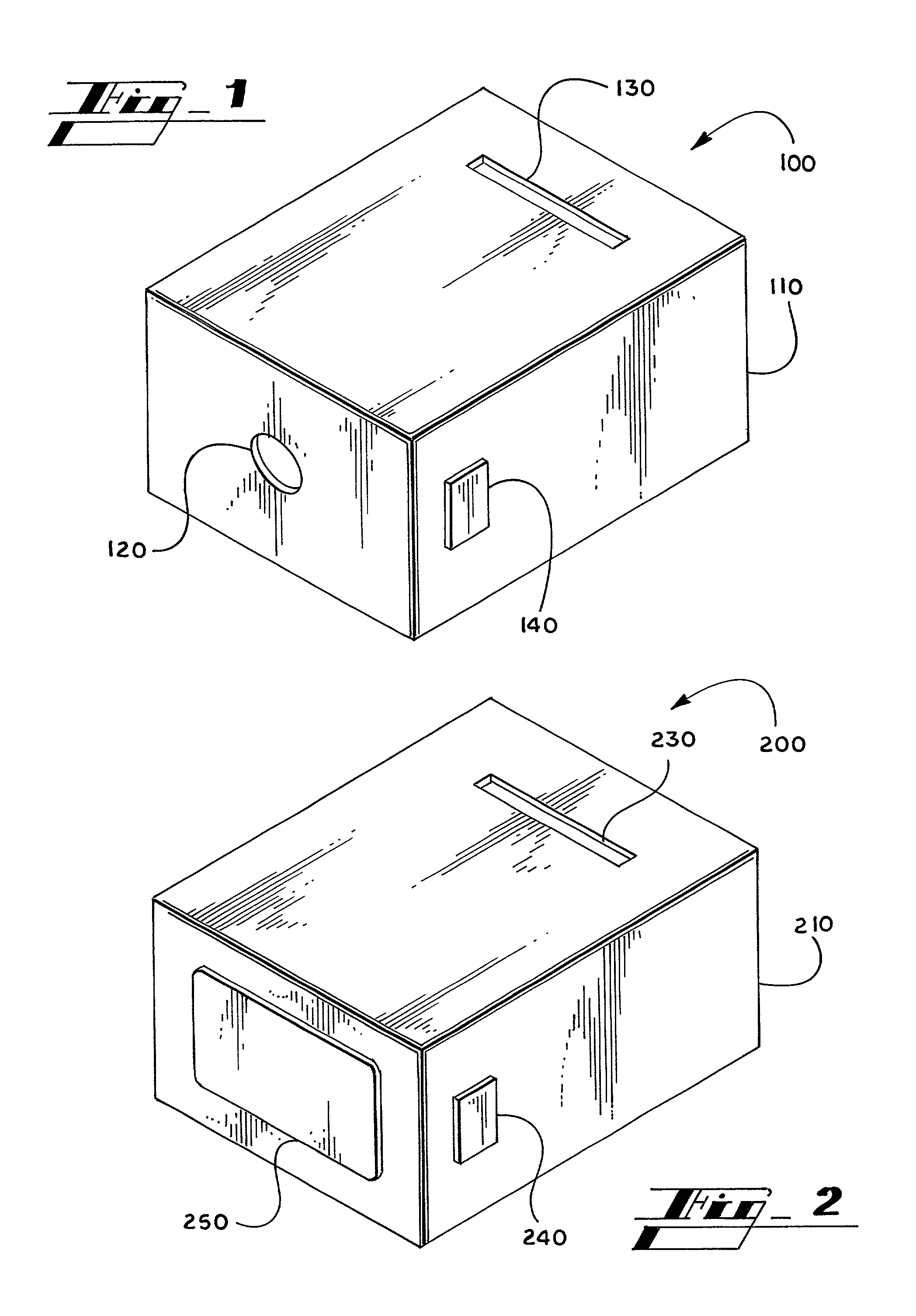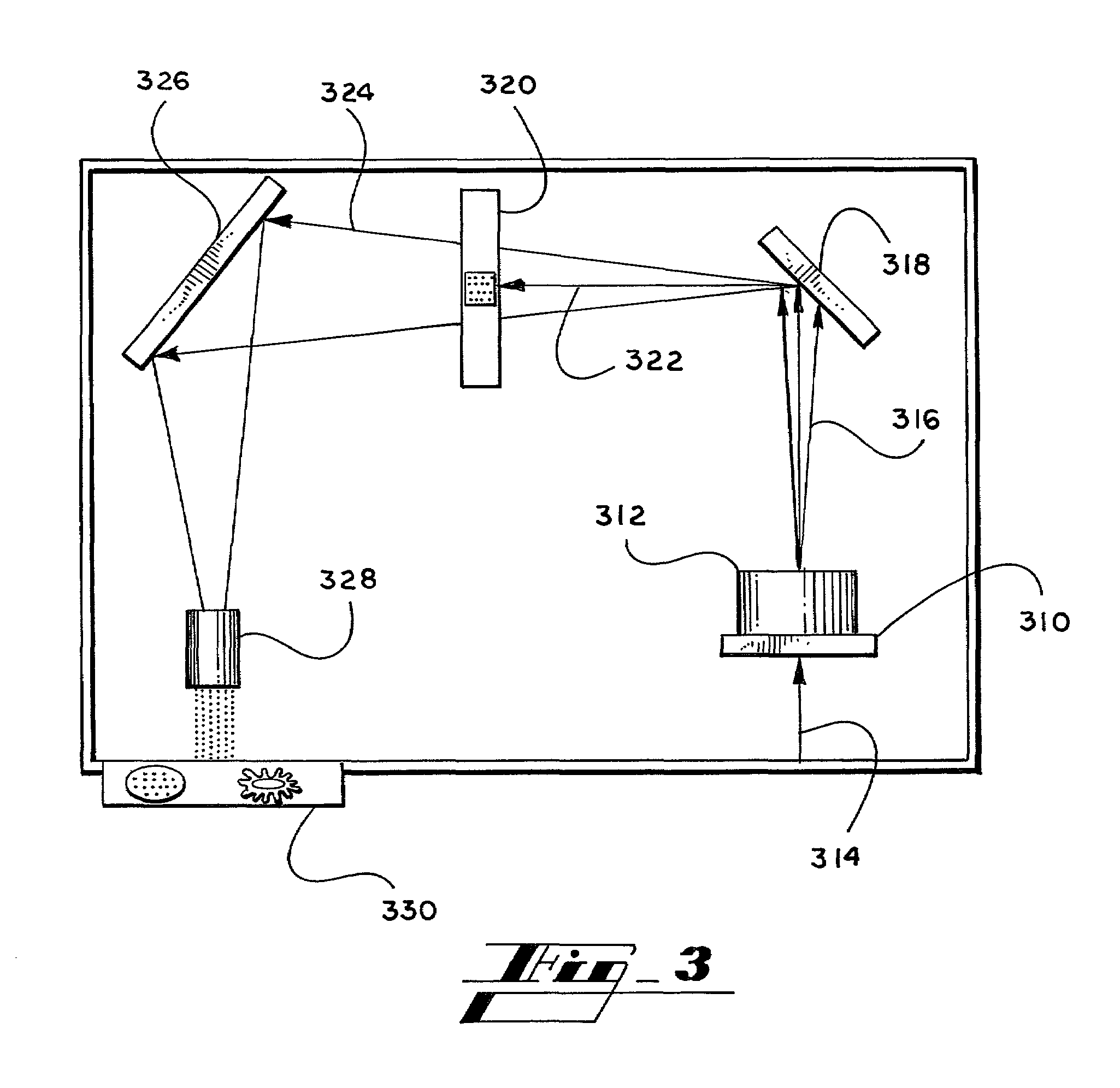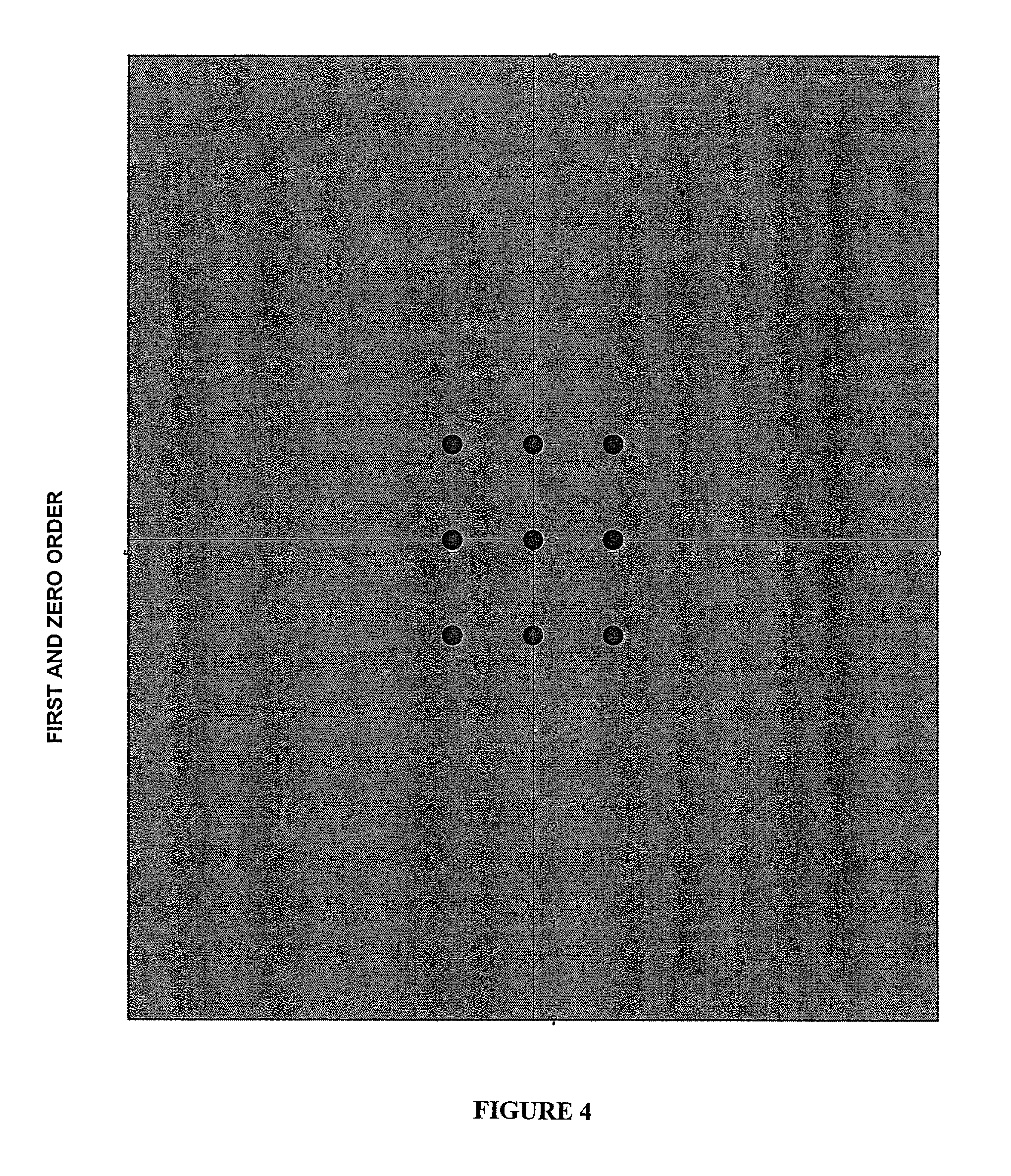Methods to view and analyze the results from diffraction-based diagnostics
a diffraction-based diagnostic and image technology, applied in the field of detecting analytes in a medium, can solve the problems of complex visualization apparatus, high cost of these systems and devices, and inability to view any diffraction image, etc., to achieve quick and easy operation, enhance the effectiveness and/or usefulness of these devices, and improve the accuracy and/or simplicity
- Summary
- Abstract
- Description
- Claims
- Application Information
AI Technical Summary
Benefits of technology
Problems solved by technology
Method used
Image
Examples
examples 1 – 3
Examples 1–3
[0102]In Examples 1–3, an algorithm and method were determined for providing a yes / no answer through direct measurement(s) of the intensity of the diffracted beams.
[0103]The experimental setup included the following: a laser beam as the light source, a diffraction-based sensing sample, a mask, a photodiode, and several lenses. When the sample fulfilled the necessary conditions for diffraction (e.g., analyte was present), the orders of diffracted light beams were transmitted through the mask in its 0° (unrotated) position and the intensity was measured using the photodiode. Then the mask was rotated to block the diffracted beams by the mask, so they did not get registered by the photodiode; in this way, diffused or scattered light was measured. Measuring the intensity of the light in both positions of the mask allowed the portion of the diffused light and scattered beams to be excluded by accounting for these values.
[0104]Various algorithms were evaluated for accuracy wit...
example 4
[0110]As shown in FIG. 3, a hand-held analyzer was prepared with the following components: a laser diode as the light source; a means to hold a diffraction-based sensing sample such that light is transmitted through it; a mask that blocked all light except for the 1st, 2nd, 3rd, and 4th diffraction orders; a photodiode; lenses and / or mirrors to direct the light; a microprocessor with memory capability; set of lights to indicate results; and LCD. All of these components were contained within a small, hand-held housing.
[0111]As soon as the analyzer is turned on, the LCD prompts the user for the necessary steps, such as “Insert Sample” then “Hit Test Button”. If a diffracting sample was inserted into the sample holder, then the diffracted light intensity was collected by the photodiode, and a microprocessor converted the result as a “positive”.
[0112]The microprocessor was programmed with the following algorithm:
A=Channel 1 reading / Channel 2 reading
wherein channel 1 measured the intensi...
PUM
| Property | Measurement | Unit |
|---|---|---|
| optical transparency | aaaaa | aaaaa |
| thickness | aaaaa | aaaaa |
| thickness | aaaaa | aaaaa |
Abstract
Description
Claims
Application Information
 Login to View More
Login to View More - R&D
- Intellectual Property
- Life Sciences
- Materials
- Tech Scout
- Unparalleled Data Quality
- Higher Quality Content
- 60% Fewer Hallucinations
Browse by: Latest US Patents, China's latest patents, Technical Efficacy Thesaurus, Application Domain, Technology Topic, Popular Technical Reports.
© 2025 PatSnap. All rights reserved.Legal|Privacy policy|Modern Slavery Act Transparency Statement|Sitemap|About US| Contact US: help@patsnap.com



